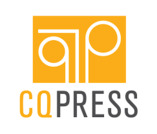
Overview on how to use CQ Researcher. All videos are close captioned.
- Subject:
- Information Science
- Material Type:
- Module
- Author:
- Kelly Griffiths
- Date Added:
- 06/24/2019

Overview on how to use CQ Researcher. All videos are close captioned.
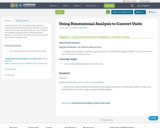
Learning Target: I can use dimensional analysis to convert units.
Students will explore different strategies to calculate feet per second to miles per hour.
Students will complete a group activity to find the speed of Barbie's car and convert the units of measure from feet per second to miles per hour.

An overview of how to use Films on Demand. All videos are close captioned.
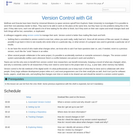
This lesson is part of the Software Carpentry workshops that teach how to use version control with Git. Wolfman and Dracula have been hired by Universal Missions (a space services spinoff from Euphoric State University) to investigate if it is possible to send their next planetary lander to Mars. They want to be able to work on the plans at the same time, but they have run into problems doing this in the past. If they take turns, each one will spend a lot of time waiting for the other to finish, but if they work on their own copies and email changes back and forth things will be lost, overwritten, or duplicated. A colleague suggests using version control to manage their work. Version control is better than mailing files back and forth: Nothing that is committed to version control is ever lost, unless you work really, really hard at it. Since all old versions of files are saved, it’s always possible to go back in time to see exactly who wrote what on a particular day, or what version of a program was used to generate a particular set of results. As we have this record of who made what changes when, we know who to ask if we have questions later on, and, if needed, revert to a previous version, much like the “undo†feature in an editor. When several people collaborate in the same project, it’s possible to accidentally overlook or overwrite someone’s changes. The version control system automatically notifies users whenever there’s a conflict between one person’s work and another’s. Teams are not the only ones to benefit from version control: lone researchers can benefit immensely. Keeping a record of what was changed, when, and why is extremely useful for all researchers if they ever need to come back to the project later on (e.g., a year later, when memory has faded). Version control is the lab notebook of the digital world: it’s what professionals use to keep track of what they’ve done and to collaborate with other people. Every large software development project relies on it, and most programmers use it for their small jobs as well. And it isn’t just for software: books, papers, small data sets, and anything that changes over time or needs to be shared can and should be stored in a version control system.
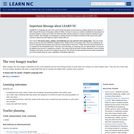
After reading "The Very Hungry Caterpillar", by Eric Carle students will use the writing process to write their own version of a Very Hungry story. They will use a flow map for pre-writing. Students will write a rough draft that will be revised and edited with a partner and a teacher.
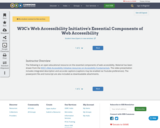
The following is an open educational resource on the essential components of web accessibility. Material has been drawn from the W3C’s Web Accessibility Initiative resources on Accessibility Fundamentals. The video presentation includes integrated description and accurate captions (captions may be enabled via Youtube preferences). The powerpoint file and transcript are also included as downloadable attachments.

Many students want to know the WHY before the WHAT. Often my students will ask, "Why do I have to learn about World Geography?" I will respond, "You don't have to learn about World Geography; you get to learn about World Geography. Some don't realize how valuable a free education is, and how so many others would do anything to have access to education. Many students often also mistake World Geography as dealing only with the physical environment, when the cultural environment is just as important. This short slide show introduces students to the subject: Why we get to learn about World Geography; What the five themes of geography are and how to go about examining them; How people are the same and how are they different, and How the environment shapes our political, economic, and social lives. The lesson includes links to a resource from Curriculum Pathways that examines each of the five themes of geography, as well as a resource from OER Commons titled 100 People: A World Portrait, that includes additional resources, videos, personal stories and inspiration.
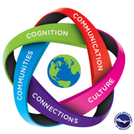
Research shows that engaging students in self-assessment positively impacts language learning, motivation, and learner autonomy. To help World Language Educators accomplish this, the Nebraska Department of Education invited experienced world language teachers across the state to create student-friendly assessments in the form of can-do statements in the summer of 2022. This document is a student-friendly self-assessment activity for novice high world language learners created based on the 2019 Nebraska World Language Standards. The language use described in all can-do statements is meant for the target language, except for the second for standard 3.1 and the first for standard 4.2. It is recommended that word language teachers engage students with this document three times in an academic year: pre-course, mid-course, and post-course. Engaging students with this self-assessment activity will help students see growth over time and hopefully attribute growth to effective learning practices. Please feel free to contact chrystal.liu@nebraska.gov for any questions and concerns.
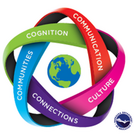
Research shows that engaging students in self-assessment positively impacts language learning, motivation, and learner autonomy. To help World Language Educators accomplish this, the Nebraska Department of Education invited experienced world language teachers across the state to create student-friendly assessments in the form of can-do statements in the summer of 2022. This document is a student-friendly self-assessment activity for novice high world language learners created based on the 2019 Nebraska World Language Standards. The language use described in all can-do statements is meant for the target language, except for the second for standard 3.1 and the first for standard 4.2. It is recommended that word language teachers engage students with this document three times in an academic year: pre-course, mid-course, and post-course. Engaging students with this self-assessment activity will help students see growth over time and hopefully attribute growth to effective learning practices. Please feel free to contact chrystal.liu@nebraska.gov for any questions and concerns.
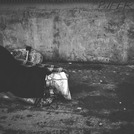
"Homeless," by Anna Quindlen, allows the student to understand homelessness as it affects many people on a broader scale. She emphasizes the individuality of homelessness, the fact that they not only lack possessions but have no place to keep them."The First" (also titled "Eviction") is a short poem by Lucille Clifton that provides the opportunity to compare and contrast the approach to the same issue through another genre.Final Assessment: How do Anna Quindlen and Lucille Clifton use language to convince the reader that their arguments have value? (focus on use of specific language, word choice, mood, tone, etc.)
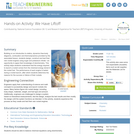
Building on an introduction to statics, dynamics free-body diagrams, combustion and thermodynamics provided by the associated lesson, students design, construct and test their own rocket engines using sugar and potassium nitrate an opportunity to apply their knowledge of stoichiometry. This activity helps students understand that the energy required to launch a rocket comes from the chemical energy stored in the rocket fuel. The performance of each engine is tested during a rocket launch, after which students determine the reasons for the success or failure of their rockets.
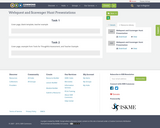
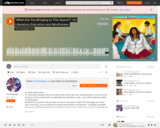
In “Puerto Rico Obituary,” poet and activist Pedro Pietri calls upon colonized folks to “kill, kill, kill the landlord of their cracked skull” by celebrating their identities, using “…their white supremacy bibles for toilet paper…”
Meditation is a practice that can teach us how to “see what is” beyond the messages we receive and, in that way, can be a pathway to internal decolonization and liberation. A radically accessible care praxis, mindfulness pushes us to question if we are unruly, unworthy, or if that is a message we have been sent by capitalist, patriarchal, white supremacy.
In this audio short, Caitlin invites us to fake it ‘til we make it, breathe into bell hooks’ teacher-healer ideal, and to kill, kill, kill the landlord that tells us we are less worthy of peace and joy; that ease is not our birthright.
Or, as Caitlin so charmingly says, call bullshit and step away.
If it sounds fun or supportive, start or deepen your meditation practice for free with Caitlin on Insight Timer.
Special thanks to Caitlin’s big brother Jon Wubbena (jonthefunkymonk.com) for creating the intro song and sound support.
Thanks, also, to the Smithsonian. "Puerto Rico Obituary" by Pedro Pietri from the recording entitled Loose Joints: Poetry by Pedro Pietri, FW09722, courtesy of Smithsonian Folkways Recordings. (p) 1979. Used by permission.
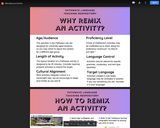
This handout walks through some reasons you might want to remix an activity, as well as how to complete the process.
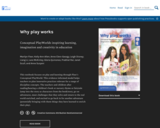
This textbook focuses on play and learning through Fleer's Conceptual PlayWorld. This evidence informed model helps teachers to plan innovative practices relevant for a range of discipline concepts. The teachers and children after reading/hearing a children’s book or nursery rhyme or fairytale jump into the story as characters from the book/story, go on adventures, meet challenges that they solve and return to the real world enriched, and excited to go back in for another adventure (potentially bringing with them things they have learned to enrich their play).

SYNOPSIS: This lesson introduces students to climate change and the idea that renewable energy sources are a better choice for the planet.
SCIENTIST NOTES: This lesson introduces students to climate change and provides an excellent resource that illustrates how climate change impacts life in New Jersey. The energy independent island Samsø, Denmark is presented through a reading of Energy Island by Alan Drummond, and a Venn diagram is provided so students can compare Samsø to their hometown. Students are tasked with designing a zero emission ferry for Samsø and are challenged to see how climate change affects them and how an 8-12 year old can make a difference. This lesson is recommended for teaching.
POSITIVES:
-This lesson allows for a collaborative learning environment for students as it builds on understanding of climate change.
-This lesson features a problem-based approach to learning where students are immersed in solving a real-world problem.
-Students connect a real idealistic community to their own to see what is possible.
-This lesson follows the engineering design process.
ADDITIONAL PREREQUISITES:
-Students should have a basic understanding of climate change.
-Students should have an understanding of the engineering design process.
DIFFERENTIATION:
-Students can think-pair-share during the read aloud where students can make predictions or answer questions.
-You can pause the read aloud for students to make observations and predictions about the story.
-Groups of students with mixed abilities can collaborate on their ferry design challenge project.
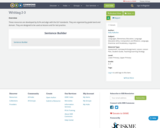
These resources are developed by ELPA and align with the ELP standards. They are organized by grade band and domain. They are designed to be used as lessons and for test practice.
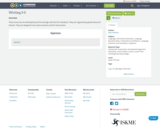
These resources are developed by ELPA and align with the ELP standards. They are organized by grade band and domain. They are designed to be used as lessons and for test practice.
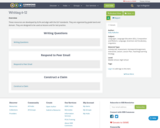
These resources are developed by ELPA and align with the ELP standards. They are organized by grade band and domain. They are designed to be used as lessons and for test practice.
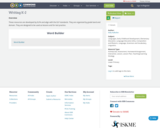
These resources are developed by ELPA and align with the ELP standards. They are organized by grade band and domain. They are designed to be used as lessons and for test practice.